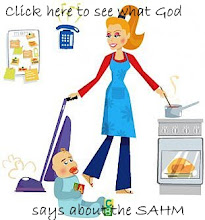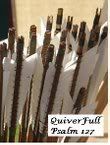I want to give you, the busy mom, some easy, practical ways to boost your child's ease of learning to read later on.
Step #1 -
This is one you aren't going to want to hear, so brace yourself. I did say easy didn't I? TV, computers, video games, some people call this "screen" time. I call it a waste of time. Seriously.
 Many of you will say that you are very careful about what our child sees. And, I surely agree, a child watching straight TV - even PBS or the like - will have a much different experience than the child viewing parent-chosen videos. But consider the following:
Many of you will say that you are very careful about what our child sees. And, I surely agree, a child watching straight TV - even PBS or the like - will have a much different experience than the child viewing parent-chosen videos. But consider the following:
When your young child is having an experience, lets say playing in the sand, there are pathways being made or strengthened in his or her brain. Connections are being made, concepts are being developed that they will use in every other area. The same thing is happening when he is watching TV. While in front of the TV, pathways for instant gratification, quick visual changes, colors, lights, and on and on are built right then. And, we are made to desire to have more and slightly different stimulus along the same lines, helping us to grow in our learning. That's why after a while Bob the Builder isn't enough anymore. They want something a little more exciting, something a little more stimulating. AND early TV viewing has been documented to cause problems later on. When allowing your child to sit in front of the TV, you are allowing your child to stop experiencing the world physically (and thus learning and solving problems) and sit, in a vegetative state, while having information thrown at them at an alarming rate. They just aren't satisfied with the same things anymore, because they've got those new pathways, and a new way of receiving information.
I can tell you, after fifteen years of teaching preschool, and I am sure any seasoned teacher can say the same thing, you can go into a classroom and pick out the TV watchers. Really. They are louder. They are more violent. They can not sit and do an activity for the same length of time as their non-TV watching counterparts. Now, I am not saying that children need to sit and be quiet all of the time. I am saying, however, that they do need to have the skills and abilities learned through hands on experiences.
So go easy on the TV and video games.
Step #2 -
Ok, now with the big, bad and the ugly out of the way, here's the easy part. Provide a print-rich environment. Have lots of letters around in different ways:
 Post them.
Post them.

 Have them available to touch and play with.
Have them available to touch and play with.

Take time to label. Here is a cubbie label with picture. Children will recognize their names early if you put it up everywhere.
 In fact, label everything. Children are very visual, if they see it enough, they will remember it.
In fact, label everything. Children are very visual, if they see it enough, they will remember it.
 Talk about the letters and words in everyday life. Just because they can't read yet doesn't mean everything has to be in pictures. The word December here can be sounded out together and talked about every day throughout the whole month.
Talk about the letters and words in everyday life. Just because they can't read yet doesn't mean everything has to be in pictures. The word December here can be sounded out together and talked about every day throughout the whole month.
Since your goal is eventual reading, you want to be sure to have many different types of reading materials around.
Magazines - Some of my favorite for children are God's World News, Babybug, Highlights, and Kids Answers.

Books - Have books in lots of different areas, at lots of different levels. This basket of board books is on a bottom shelf. Next to it, squeezed between a wall and a bookcase is a teeny, tiny toddler chair. This is one of the favorite places to read among the preschoolers. I think they like the enclosed space. Be sure to have board books available for your little ones all the time! I know it's a mess, but it's one of those messes that are worth it.
 Although bookshelves are great, they make it hard for children to see the books and choose one. Either they won't even make the effort to look at the books or they will throw them all over the floor. For years I wanted a book display center but couldn't part with the huge amount of money they ask for them. I compromised and bought this wire rack at a business sale. It's not what I wanted but it works ok. If you have a willing and handy husband you might talk him into making you something that would work.
Although bookshelves are great, they make it hard for children to see the books and choose one. Either they won't even make the effort to look at the books or they will throw them all over the floor. For years I wanted a book display center but couldn't part with the huge amount of money they ask for them. I compromised and bought this wire rack at a business sale. It's not what I wanted but it works ok. If you have a willing and handy husband you might talk him into making you something that would work.Have lots of books out and change them often. The library is a wonderful resource but I am finding myself just too busy to run their weekly like I used to. A great tool to use is the online ordering system that so many libraries have these days. Find the books in the topics that you want, order and they have them waiting for you when you go in. Inter-library loan is also an option for many of us these days.
Step #3 -
Use lots of different media.
TV - After all I said in step #1, I'm going to break my own hard and fast no TV rule here. This is the only time you'll here me say it though! Buy a copy of Leap Frog's Letter Factory video. After years of going over and over flash cards to get my kids to learn the sounds of the letters - someone got smart and came out with this cartoon. Yeah, it's still TV (don't rub it in) and yeah, it's screen time but I'm telling you, if a two year old can learn her letters without any work at all. So be it! If you are going to put your child in front of the TV, consider making this your go to movie.
Sand and salt trays - These are fun, cheap and easy. Find yourself a tray with sides, maybe a cookie sheet or casserole pan. Pour salt or sand in and you have an instant preschool activity, great for drawing letters in.
Play dough, peanut butter dough, bread dough or clay - You can pick up some letter cookie cutters to use with these but even better, shape letters with them. Consider making homemade soft pretzels with your children one afternoon.
Shaving cream/pudding - I love shaving cream. I can't say enough! Squirt some on your table and let your preschoolers go to town. Nice smell, cleans off all that build up of gunk that every homeschooling mom has on her tables. Back in my neat freak days (which, by the way, are long gone) I would put my one or two children in the bathtub and let them go at it, just hose them down with the shower head afterward. If you have a very little one steer clear of shaving cream. If they rub it in their eyes, fun quickly turns to disaster. Pudding is a great alternative. Strip said child and strap them in a high chair for this activity.
Paint - Every child needs this stuff. With brushes, with q-tips, with fingers.
Flannel - Make yourself a flannel board with an old sheet or a pair of pjs. Cut letters out to stick on.
Audio tapes - Yes, I know, now we call them CDs but, I grew up in the 80s and it's hard for me to change. :) I am an audio learner and tend to go overboard on listening tools. Get books on tape, library sales or Scholastic are great for these. Listen to children's tapes.
Ok, I could go on all day, you get the idea. Find ways to let your children see, hear and touch letters. Don't forget about the old pencil and paper routine.
Step #4-
As tempting as it may be, steer clear of workbooks and reading programs for young children, at least four and under. Some really eager mommies will spend an huge amount of time trying to get their preschoolers to sit at the table for "school". You'll kill their excitement for learning this way. Maybe some firstborns can hack this, but it's a questionable move. And, you'll always have that one that wants to "do school" really early on but don't make them do it the "right" way. They just aren't ready. Hands-on activities as previously suggested are much more beneficial.

While we're here, I'd like to lump coloring books in to this category. They aren't the best thing to give your little ones. Yes, they love them, but white paper with a pencil will further their pre-writing skills where as the coloring book isn't helpful in this area. Wait until they are seven or eight.
Step #5-
Let them see you read! I was talking to another homeschooling mom recently and was shocked to hear her say that her two teenagers didn't read books for pleasure. I was not surprised, however, when she admitted that she was not a reader either.
It's very natural for most of us to read all of the time, books, letters, the paper. But, if you are struggling with your children having no interest in reading, this might be a helpful hint.
So, there you have it. My five easy steps to the literate child.




















4 comments:
You are such a great mom! I totally agree with you on Leap Frog's Letter Factory - it is truly amazing! You are absolutely right about screen time being a bad thing over all...and labeling things - I once did very well at these things, and need to get back to them! It is hard when we have moved so often...hoping to get back into it now that we are one place for awhile though!
Great Post Jennifer...I think I want you to come over for a day and help me do all this...
We have letter factory for the Leapster game...Grace taught herself to read using this and I am trying to get a boyish colored leapster for David to get him started on it.
Great, Great tips...and when you are on our side...let me know if you have a free day...I'll make the chocolate chip cookies!!!!
Love,
C~
Excellent post and I love that it comes from experience! I'm very thankful that both my kids enjoy reading. Hard to keep up with having enough good material available for them though. I keep a list in my purse for whenever I pass by a thrift store or yard sale and have the time to stop....I have found the best books that way!
Thank everyone. You are so encouraging! And, yes, Carrie I'd love to come over and help out. It's fun for me to do all of these preschooly things. Especially if you make the cookies!!! :)
Post a Comment